
The Turkish Grameen Microfinance Program (TGMP), which has provided more than 1 billion 200 million TL microcredit to more than 200,000 women in total since it was founded in 2003, paving the way for them to participate in working life as productive individuals, was established by the Turkish Foundation for Waste Prevention (TİSVA). It is a non-profit microfinance institution operating in cooperation with the Grameen Trust. The program creates a significant positive social impact by providing many benefits to women benefiting from microcredit, both financially and morally, and providing many benefits to their families, children’s education, and their close circles.
Considering TGMP’s loan diversity, 100% repayment success, the commitment of micro-entrepreneurs to the program, and the inclusion of other women in the program, the need to go one step beyond the cost/benefit analysis of the micro-credit program and understand the value of changes for micro-entrepreneurs arose. Based on this requirement, the program’s impact is measured by Ceyda Özgün, Etkiyap Social Impact Coordinator, from the perspective of Social Return on Investment (SROI).
We talked about the microcredit program that contributes to the social and economic empowerment of women and accordingly the change in the status of women in society, and the first findings of the Social Impact Analysis of the program prepared by Etkiyap, together with TGMP General Manager Halil Orhan, Etkiyap Chair of the Executive Committee Şafak Müderrisgil and Etkiyap Social Impact Coordinator Ceyda Özgün.
1.In introducing Turkey to the concept of microcredit as the Grameen Microfinance Program within TİSVA, Prof. Dr. Aziz Akgül has been a pioneer. As a foundation, how did you decide to bring the concept of Microcredit to Turkey and implement it?
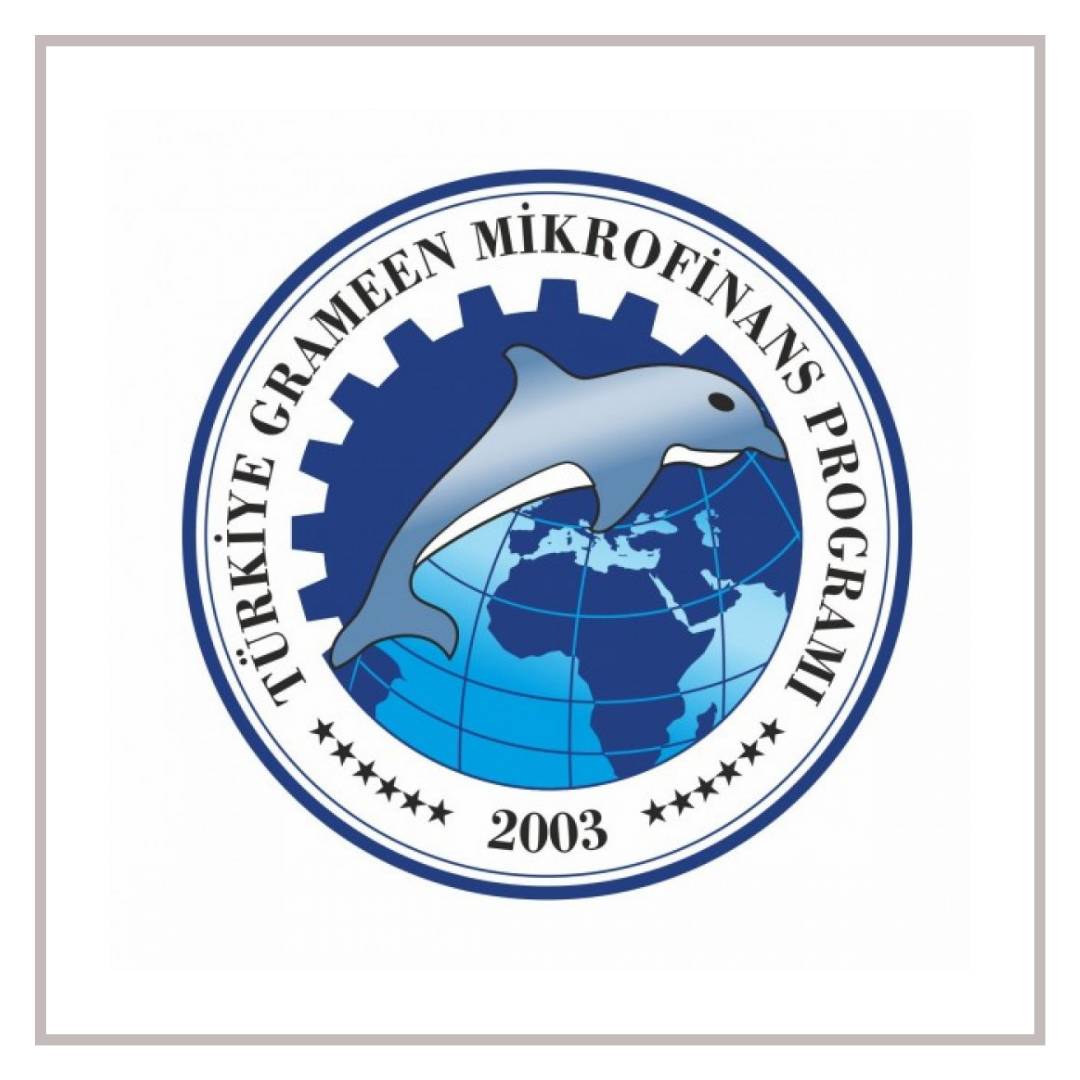 Halil Orhan: The pioneer of microcredit in Turkey, Prof. Dr. Aziz Akgül prepared the “Eastern and Southeastern Regional Development Program” for the first time in 1996 when he served as the prime minister’s chief advisor. The purpose of this development program was to eliminate terrorist activities in the Southeast and help reduce unemployment and poverty in the region. Microcredit application has been preferred as the most critical strategy in reducing poverty. Micro-credit application has been preferred as the most important strategy in reducing poverty, and the world’s pioneer of micro-credit, the advisory board, has been established for this purpose.
Halil Orhan: The pioneer of microcredit in Turkey, Prof. Dr. Aziz Akgül prepared the “Eastern and Southeastern Regional Development Program” for the first time in 1996 when he served as the prime minister’s chief advisor. The purpose of this development program was to eliminate terrorist activities in the Southeast and help reduce unemployment and poverty in the region. Microcredit application has been preferred as the most critical strategy in reducing poverty. Micro-credit application has been preferred as the most important strategy in reducing poverty, and the world’s pioneer of micro-credit, the advisory board, has been established for this purpose.
When Prof. Dr. Aziz Akgül became a member of parliament on November 3, 2002, the necessary legal infrastructure was established to implement microcredit activities in Turkey with the great support of our then Prime Minister, President Recep Tayyip Erdoğan, and then Minister of Interior, Abdülkadir Aksu.
Thanks to the technical knowledge provided by Muhammed Yunus, the pioneer of microcredit and Nobel Peace Prize winner, and due to the first capital provided Aziz Akgül with his means, Turkey Grameen Microfinance Program is fully trusted, without any bail, to enable low-income women to engage in income-generating activities. It has started to provide microcredit support based on only returnable loans.
2. TİSVA and TGMP are your two institutions operating in this field so far; what are these two institutions doing? How many women have you given microcredit to so far? Were the women you gave micro-credit to women who had access to finance?
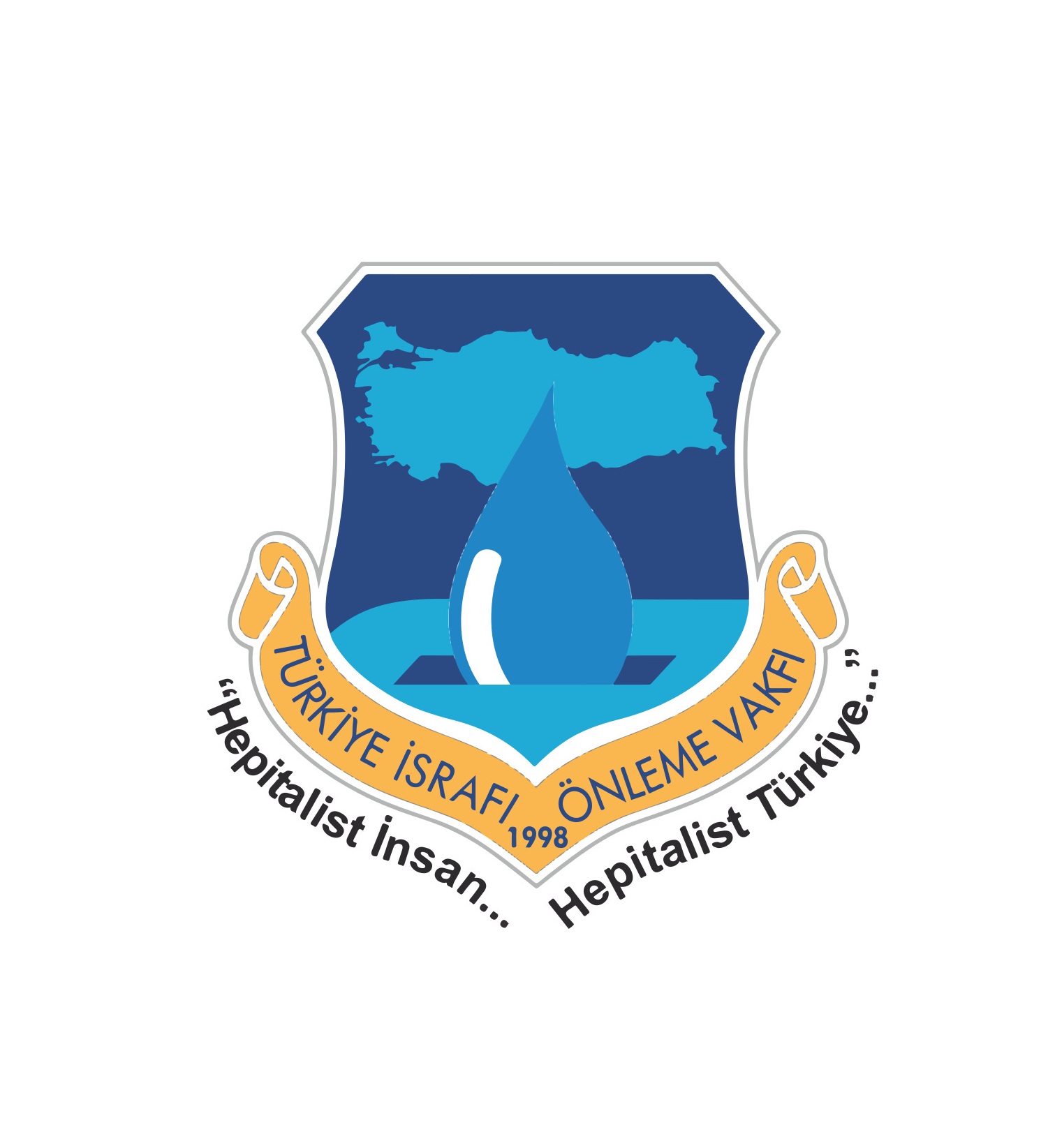 Halil Orhan: The aim of the Turkish Waste Prevention Foundation is to contribute to the efficient use of all the resources Turkey has and contribute to the development of the awareness of preventing waste in society. TİSVA, to reduce poverty, carries out microcredit, microfinance, and training activities.
Halil Orhan: The aim of the Turkish Waste Prevention Foundation is to contribute to the efficient use of all the resources Turkey has and contribute to the development of the awareness of preventing waste in society. TİSVA, to reduce poverty, carries out microcredit, microfinance, and training activities.
By cooperating with the public, private sector, and voluntary organizations; It carries out its activities to ensure that the society can live in a waste-preventing lifestyle under the principles of saving through in-service training, conferences, seminars, and other educational programs.
As Nobel Prize-winning economist Amartya Sen stated, micro-measures should also be taken to reduce unemployment and poverty. The microcredit strategy is implemented in more than 150 countries around the world. Microcredit has been chosen as the most critical strategy for realizing “eliminating all kinds of poverty by 2030”, which is the first of the “2030 Sustainable Development Goals” determined by the United Nations in 2015 and under which Turkey has its signature. Elimination of poverty in all its dimensions has been accepted as an indispensable requirement for sustainable development. The first goal in the published “17 Sustainable Development Goals” has been determined to ” end all kinds of poverty, wherever it is.”
The primary strategy applied in reducing poverty in our country is an aid in the form of grants. These should be provided to the elderly, disabled, and patients who cannot work by going to their homes in the form of cash and in-kind assistance they need. However, instead of granting aid to the poor who can work, microcredit, which is a small capital, should be given in a way that will contribute to raising them above the poverty line so that they can engage in income-generating activities on their own. Poverty can never be prevented with aid in the form of grants. Giving grants to every poor is also a severe waste of resources.
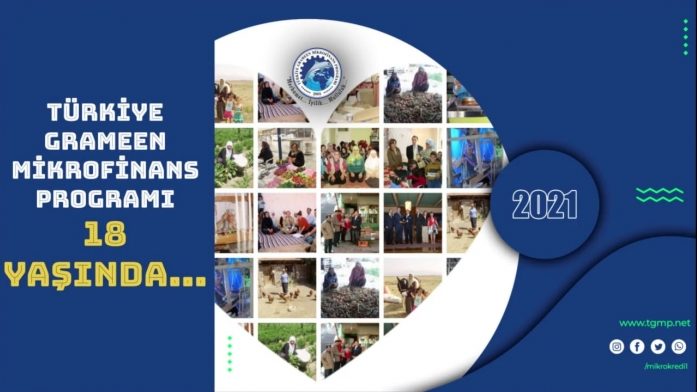 In line with these purposes, Turkey Grameen Microfinance Program is a non-profit microfinance institution that has been operating since 2003 under the Turkish Foundation for Waste Prevention. We, as TGMP, provide microcredit support, which we call small capital, for the inclusion of low-income women who do not have access to financial services and who are trying to rise above the poverty line.
In line with these purposes, Turkey Grameen Microfinance Program is a non-profit microfinance institution that has been operating since 2003 under the Turkish Foundation for Waste Prevention. We, as TGMP, provide microcredit support, which we call small capital, for the inclusion of low-income women who do not have access to financial services and who are trying to rise above the poverty line.
Our institution still supports over 40,000 low-income micro-entrepreneur women with 93 branches in 64 provinces across Turkey. As you have just mentioned, we have provided more than 1 billion 200 million TL of microcredit support to more than 200,000 women in total since our establishment in 2003. The number of beneficiaries, including family members, has reached approximately 800,000 people. Poor women who will use microcredit are provided with a maximum of 1,500 TL microcredit for the first year, while the amount of microcredit increases over the years to a maximum of 15,000 TL. Considering the return rate of the microcredits given, there is a 100% success. Currently, more than 45,000 poor women are waiting for microcredit to start their own business or develop their existing business. In case the fund support can be increased, it is foreseen to reach all poor women with business ideas in Turkey. To reach more financial resources; Our activities are carried out in cooperation with private sector organizations, business people, official institutions and organizations with which we carry out joint projects.
3. You have decided to measure the activities you have been carrying out since 2003, for the first time in 2020, through EtkiYap. What influenced you as a foundation to take this strategic decision? Why was measuring social impact important to you? Will you continue to measure the social impact of your microcredit?
2003, for the first time in 2020, through EtkiYap. What influenced you as a foundation to take this strategic decision? Why was measuring social impact important to you? Will you continue to measure the social impact of your microcredit?
Halil Orhan: Social impact analysis is very important for measuring and evaluating the social impact created by organizations like ours that are trying to produce social benefits. Social impact analysis enables organizations to look at the work done more holistically and to understand how much they are realizing their potential. Based on the analysis in question, organizations become more reliable before donors, investors, and funders by finding convincing evidence of the benefits they provide to society and the environment. Therefore, social impact measurement is increasingly important not only for organizations to control their impact but also for their financial survival.
We, as TGMP, were aware that microcredit is not only a financial resource but also provides great changes in the social life of women, beyond income-generating activities. However, we had difficulties in conducting research that could reveal this with numerical data. We tried to reveal these data by conducting surveys several times before, but we could not reliably analyze the survey results. Because this research required a separate area of expertise. At the same time, as you know, we carry out many joint projects with international institutions. We can make all kinds of reports about the amount of microcredit and the number of project beneficiaries to the institutions with which we carry out projects with the data we receive through our software.
Impact Analysis is a systematic process carried out to realize a successful requirements management process by seeing and evaluating the effects of changes in business demand for any reason on business needs and requirements. For this reason, to prove the social impact of microcredit on women, we decided to measure the activities you have been carrying out since 2003 for the first time in 2020, through EtkiYap. However, we think that social impact analysis will help in the acceptance of our projects in future project applications. Because the diffusion of social impact measurement and reporting inevitably enables the entire social sector to communicate more effectively with each other. The transparency created by social impact measurement accelerates the sector.
In the next period, we plan to continue to conduct social impact analysis every year. In fact, as the TGMP team, we plan to carry out this analysis within our structure in the following years by getting accredited practitioner training from Etkiyap.
4. Why was it important to work with TİSVA and TGMP for EtkiYap? Is microcredit one of the areas where the impact investment model is applied? How will the measurement of the microcredit given to women benefit the foundation? Does the foundation also become an impact investor if it decides to continually measure and manage its impact? What are the advantages of a Foundation being an impact investor?
Şafak Müderrisgil :First of all, let’s look at the history of the Turkish Grameen Microfinance Program, which has been operating for nearly twenty years. To begin with, TGMP has never lost its mission and continues on its way by improving its vision. For nearly 20 years, it has been working to reach low-income women, provide them with microcredit, support them to become entrepreneurs, and make them financially literate. TGMP has been successfully developing and scaling for nearly two decades.
These projects of TGMP, on the other hand, serve for the Sustainable Development Goals, which were presented by the United Nations to the world in 2015 to eradicate poverty and to prevent anyone from being left behind. TGMP’s projects include the 1st Global Goal, which stands for no to poverty, and the 4th, which advocates for quality education; the 5th, which promotes gender equality; the 8th that provides decent work and economic growth; and the 10th, which advocates the elimination of inequalities.

In response to the question of whether microcredit can be the subject of the impact investment model; if an institution touches more than one global goal and has placed the goal of creating positive social impact at the center of its strategy from the very beginning of the project, it is possible to talk about impact investment. If we know that this project has a positive social impact, we can say that this social investment made by a foundation is also an impact investment.
Let’s take a look at what happens when we measure social impact. Above all, by measuring the social impact, the social value of the business for the stakeholders will be revealed. At the end of the investment or project period, you will be able to say that in this project, where I invested 100 units, I achieved 20 units of change. You will also have the data needed to channel the resources invested in this project into value-creating activities, which will enable the project to be more efficient in its later phases and generate profits due to resource conservation. You will be in an advantageous position in obtaining funds from national or international organizations because your institution will be accountable and scalable with transparent impact data.
In order to be an impact investor, the intention to create social impact must coincide with other purposes from the very beginning of the project or investment and throughout it. If your goals are compatible with global goals, if you measure and report your impact throughout the investment period, that means that your investment is impact-oriented.
What is the advantage of being an impact investor for a foundation? First of all, making an impact-oriented investment for a foundation or institution is a choice. These choices are built on the answers given to the questions such as in which social or environmental issues do I create added value with my investment, and in which area do I provide sustainability? Institutions that measure their impact are those that know how to manage their resources and therefore gain an advantage in finding funds.
5. Etkiyap will present this investment which it has measured as a case study at the Social Value International 2021 congress. As TGMP and Etkiyap, you have also prepared an academic article on how the status of women who receive microcredit has changed in society. What is the content, can you talk a little bit?
Şafak Müderrisgil: We participate in this conference this year, just like every year. The motto of the annual Social Value International Conference, which will take place in Thailand on October 20 and 21, is “social value is important”. This year, as Etkiyap, we participate in this conference as a panelist and support it with academic publications.
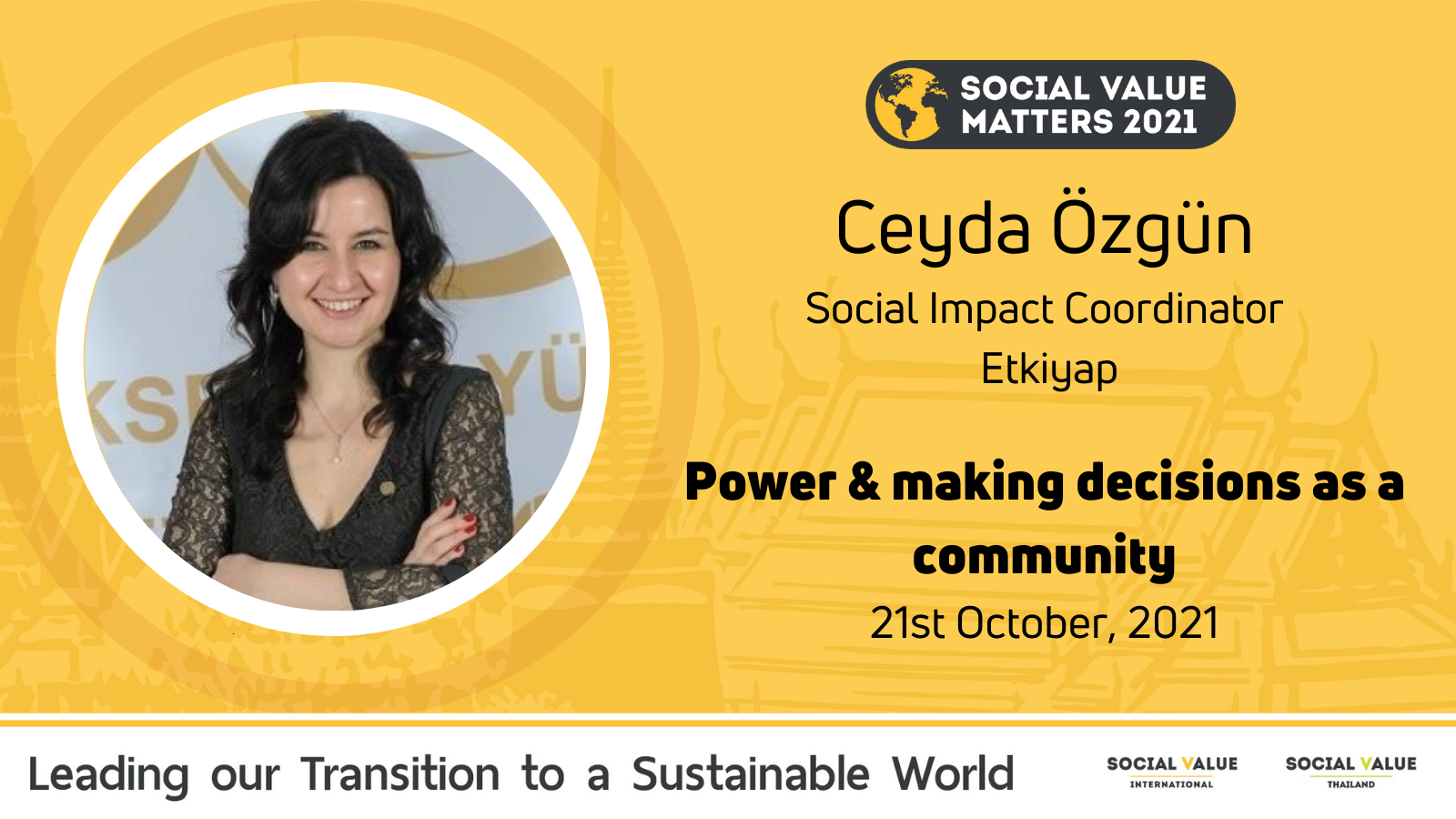
Our article includes an analysis of the microcredit model as a strategy for women to access finance. Microcredit has brought about serious changes in the lives of more than 200,000 women who do not have direct access to finance in Turkey. The aim of the article is to find and reveal the social value of the change in the lives of women who do not have access to finance, who use banking services mostly through their husbands rather than directly, and who become entrepreneurs and participate in the economy with the provision of microcredit. While doing this study, we create a report prepared with the data collected through interviews with women in 64 provinces of Turkey and reveal the social outcome of the investment made. We see that 877 women completed the interview to which we started with 1036 women subjects. With the study, the change created by microcredit in women’s lives is observed especially in terms of socialization of women, increase in social life quality, increase in life satisfaction, improvement in family relations, increase in self-confidence, more respect in society and increase in coping skills with financial problems. Looking at the change in women’s lives created with microcredit, we see that the status of women has increased and women have become stronger in many areas.
6. You have received the first findings of the Social Impact Analysis. When you look at the results covering the positive and negative changes provided by microcredit, are there any expected or unexpected changes that particularly attract your attention?
Ceyda Özgün: The change that caught my attention the most was that women started to gain respect from their environment. The reason why this situation caught my attention is that 16% of the women participating in this program stated that they started working due to the lack of other income in their households, and 77% of them due to insufficient income in their households. It is actually a social norm for women not to work, to devote themselves only to housework and to their children. When women who stay away from working life due to these reasons start working in response to necessity, they see that the people around them show more respect to them. This shows us that a social norm has changed direction. In this sense, it was a result that really caught my attention.
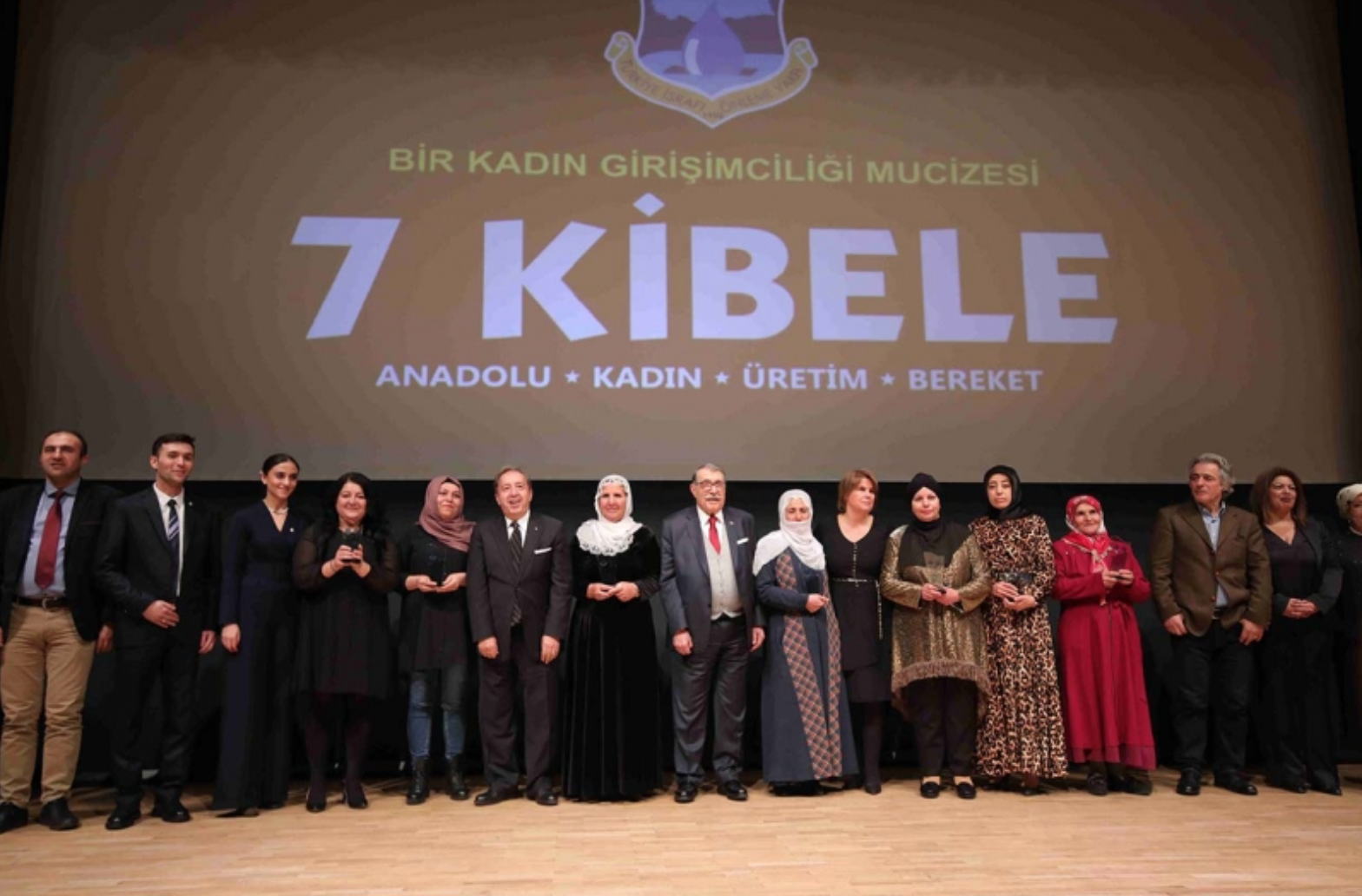 Halil Orhan: When we look at the first findings of the Social Impact Analysis, thanks to the microcredit, 81% of women have expanded their social environment, 79% have improved their quality of life, 60% have gained respect in their environment, 67% have increased their self-confidence and 72% have increased their ability to cope with financial problems, which were among the changes we expected.
Halil Orhan: When we look at the first findings of the Social Impact Analysis, thanks to the microcredit, 81% of women have expanded their social environment, 79% have improved their quality of life, 60% have gained respect in their environment, 67% have increased their self-confidence and 72% have increased their ability to cope with financial problems, which were among the changes we expected.
In addition to those, although they are the outcomes that we did not expect, It made us happy to see that 60% of women experienced improvements in family relationships. I believe that the fact that women are beginning to offer better opportunities to their families with their economic freedom, plays a major role in strengthening their family relations. In addition, the increase in the quality of social life of 79% of women is among the unexpected changes. The results of the first findings prove the positive reflections of the 5-person group dynamic that we applied in the microcredit system. The 5-person group dynamic consolidates the social solidarity, friendship and cooperation between women in the same group.
7. When you evaluate the results obtained from the analysis, do you think that the central meetings implemented in the microfinance model, apart from the financial resources provided, also contributed to these changes?
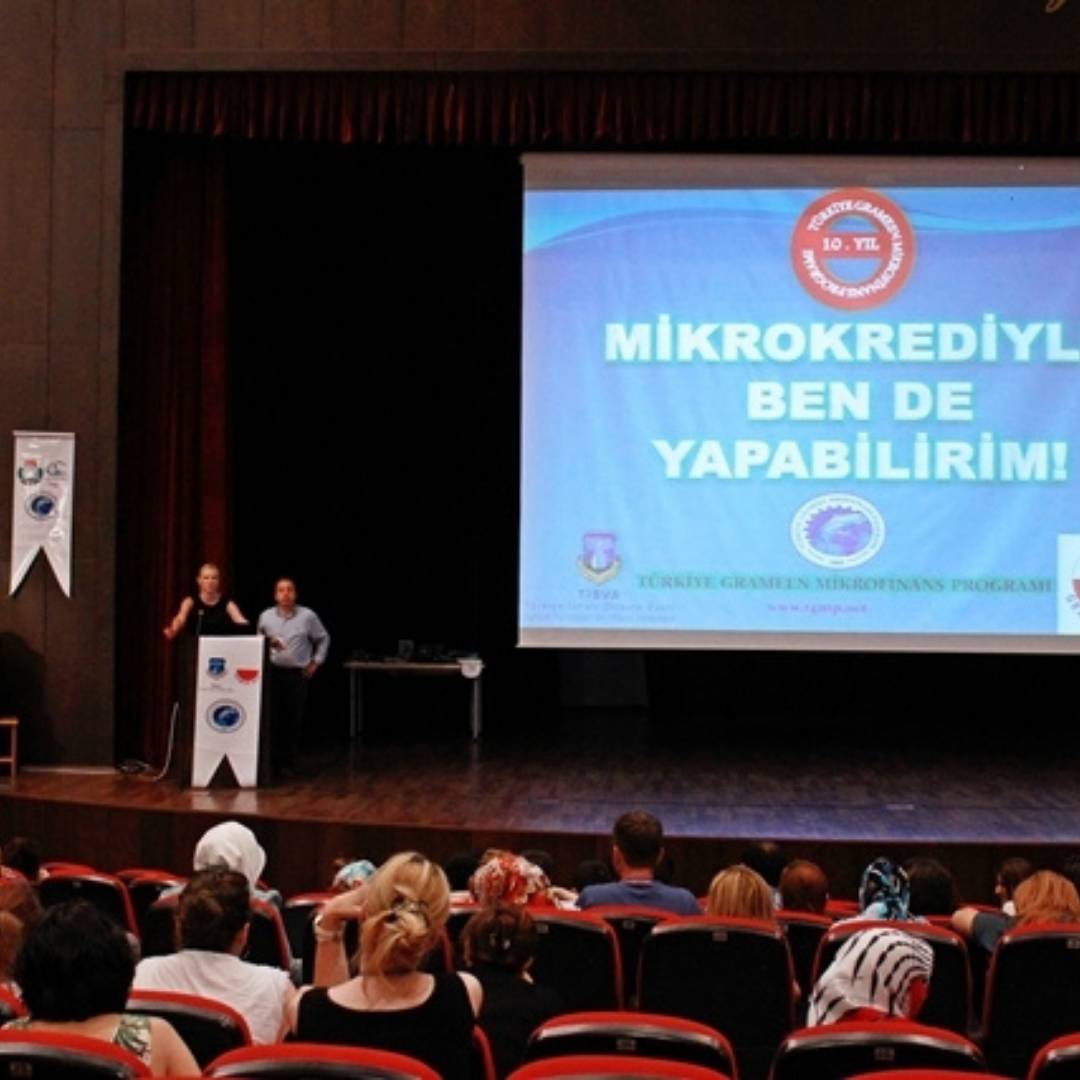 Halil Orhan: Our micro-entrepreneurs, who benefit from the microcredit system through TGMP, meet with microcredit branch employees at the central meetings held every week with their groups (these meetings can be at the home or workplace of the micro-entrepreneur) and make their collections. However, in the central meetings held every week, women, beyond paying collections, share their business ideas and consult among themselves, and encourage each other within this group dynamic.
Halil Orhan: Our micro-entrepreneurs, who benefit from the microcredit system through TGMP, meet with microcredit branch employees at the central meetings held every week with their groups (these meetings can be at the home or workplace of the micro-entrepreneur) and make their collections. However, in the central meetings held every week, women, beyond paying collections, share their business ideas and consult among themselves, and encourage each other within this group dynamic.
8. When we examine the results of the analysis, the data that 81% of female micro-entrepreneurs have acquired a new social environment also shows how important the role of the central meetings in this change is. Micro-entrepreneurs who benefited from the program stated that they experienced multiple changes under the headings of “social environment, improvement in the quality of life, being respected by others, increased self-confidence, coping with financial problems, increased quality of social life and improved family relations”. When we look at the relative importance of these changes, we see that they are equally important to shareholders. What does this result tell us?
Ceyda Özgün: This data actually tells us more than one thing. First of all, all these topics show that the problems that arise in everyone’s life due to poverty have disappeared and that none of these problems is less important than the other. In other words, women take life as a whole. Life is a whole. With our social life, our home life, our quality of life, the financial problems we face. At this point, I will be asking a question and actually giving the answer myself. Which of these titles is gender-related? None. These results show us, secondly, that if men live life, women live it too. So we cannot separate this life into men and women.

9. Both the changes and the relative importance of the changes we just talked about were findings based on statements made directly by shareholders. What happens if shareholders are not included in the measurement?
Ceyda Özgün: Let me answer this question with an example. You have invited a guest for dinner. Let’s say you add walnuts to all your meals because you love walnuts as a host; in a salad, main course and olive oil dish… Your guest came and noticed the situation and told you that he was allergic to walnuts. What happened? All your hard work was wasted. You didn’t sit at that table and eat that meal together, so your spending was wasted. You ordered food from outside to make up for it, and the cost is higher now. You felt bad emotionally because you couldn’t host your guest. You were hungry for longer while you were waiting for the food to be delivered. So you’ve wasted all your financial and non-financial resources. If we do not include stakeholders in the analysis, we run the risk of wasting our resources. The most accurate way to use our resources correctly is to conduct the analysis together with our shareholders, and even to run the program together with our shareholders. Since it is they who experience change, they will be the ones who will tell us what they need and what changes will be more valuable to them.
10. During the shareholder interviews, some micro-entrepreneurs stated that each woman in their group works in a different field and thus they also learn about each other’s businesses. This view shared by the shareholders; points out that a very sustainable order has been established both in social terms and in terms of creating new business opportunities. Was the aforementioned value a situation you foresee while making the project?
Halil Orhan: As you know, the Grameen system, which make the way Muhammed Yunus to receive the Nobel Peace Prize in 2006, was founded on central meetings. The central meetings are the place where micro-entrepreneurs using microcredit come together to repay their loans and exchange ideas about their business activities within the microcredit program. The women who come together at the center meetings both socialize with the other women in their groups and exchange views about the work they do. For this reason, we see that we have achieved the goals we aimed while holding the central meetings thanks to the impact analysis.

Our women exchange ideas and form a system both while paying their collections and at these central meetings this is a solidarity activity. In other words, the modeling that we have established here, namely the central meetings in the Grameen system, which facilitated Muhammed Yunus to receive the Nobel peace prize in 2006, exist to ensure this. In other words, our aim is not just to bring women together and collect collections from them. While making these collections, these centers are a phenomenon for us where we listen to the social, family, and economic problems of women and produce solutions for them. A woman with a business idea also enters microcredit to use credit. Women who do not have a business idea also come to us. What are we doing to those women? We also inform women who do not have a business idea about our centers, and we help them develop business ideas by participating in the meetings here for 1-2 months. And then, if she accepts the terms and fits our terms, we include her in the microcredit. And we direct you to the centers so that we can support you based on the work you do. You can see from this point, in social impact analysis, that many of our women socialize in these centers. So, they interact with each other. This shows that we have achieved our aims.
11. The acquisition of economic freedom; It means exceeding the boundaries drawn by society, being free, being respected by others and living in good conditions. From the perspective of the beneficiary women, the microcredit chance you provide; Can we say that it means gaining freedom in different areas beyond financial returns?
Ceyda Özgün: We have seen that with this analysis, women do not differentiate between the changes they have encountered; All are equally important to them. They consider life as a whole; freedom is like that. They have taken up their freedom not only in the financial area of life, but also in many areas; their social life, family life, business life… This business belongs to them, they lead the business they have established. Therefore, the essence of the work; women make their own decisions, which I think is the greatest freedom they have ever had. But of course, this is my interpretation; The question still needs to be asked to women.
Halil Orhan: Of course, we can easily say that this indicates. Thanks to microcredit, we see that besides bringing low-income women into economic life, they gain their freedom in different fields, their self-confidence is formed, and they can expose themselves more easily. The data showing that 81% of the women participating in the survey have acquired a new social environment, 79% have improved their quality of life, and 60% have increased their peace in the family, proves this.
As a result, this issue should not be evaluated as just making money. Beyond making money, acquiring a social environment, increasing the quality of life, and extending the peace of the interaction area of the activity, and more importantly, ensuring happiness, proves our data and results.

12.Social Return on Investment (SROI), which is the measurement framework used in the program’s social impact analysis, can be realized in two different ways: 1- Evaluation conducted retrospectively and based on already realized data. 2-Forecast, which predicts how much social value the activities will create if they meet their intended results.
The impact of the Microcredit Program is measured by the first method, the actual data. Do you think that this measurement is important in terms of giving an idea about the future of microcredit and the social impact it will provide so that the impact can be managed?
Ceyda Özgün: I conceive 100 percent. We can determine the steps to be taken to increase the value with the realized data in a much more realistic and robust way. We also know which changes are important and priorities for stakeholders. In the TGMP example, the fact that the changes are the ones they already know and concentrate on for the organization makes their job easier, while the fact that all their changes are equally important takes things to a different level. No negligible change: means they must manage all the changes. Changes need to be managed, and thanks to the evaluation analysis, we have a roadmap. We are putting a light on our path so that we can see ahead
13. Finally, would you recommend that programs focused on reaching similar impact also measure and manage their social impact? What happens if the impact is not measured?
Ceyda Özgün: It’s like trying to move forward while blindfolded. If we do not see ahead, we will likely be stuck in barriers. So, what are these barriers? It means wasting resources; means a waste of our time, effort, financial power. None of these are unlimited resources. By forming a value, if we want things to change now, we have to use our resources in a pinpoint manner. I witnessed the correct use of resources in the TGMP analysis, and I think they owe their success to this. They manage human resources very well, direct their energies to the right point, use their efforts and knowledge at the right points, and get positive results today.
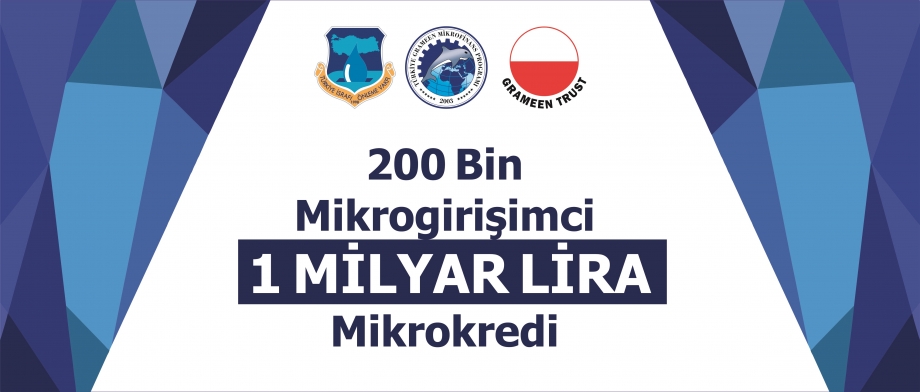 Halil Orhan: Of course, I recommend it. This process requires participation and cooperation to achieve a common approach. Collaborative measurement includes any tool that can be used by more than one organization for impact measurement. Having comparable and robust data has helped us discover the different interventions needed to undertake different social issues.
Halil Orhan: Of course, I recommend it. This process requires participation and cooperation to achieve a common approach. Collaborative measurement includes any tool that can be used by more than one organization for impact measurement. Having comparable and robust data has helped us discover the different interventions needed to undertake different social issues.
When we look at the funding institutions, individual and corporate donors; It is very important for the sustainability of the projects to give feedback to the funders and organizations on the impact they have created.
Social impact measurement will be very advantageous for you in terms of revealing the differences created by the service you provide to the people you reach as an institution. In addition, thanks to social impact measurement, you will strengthen the relationship of transparency and trust between donors and your institution and boost the reliability of your establishment.

